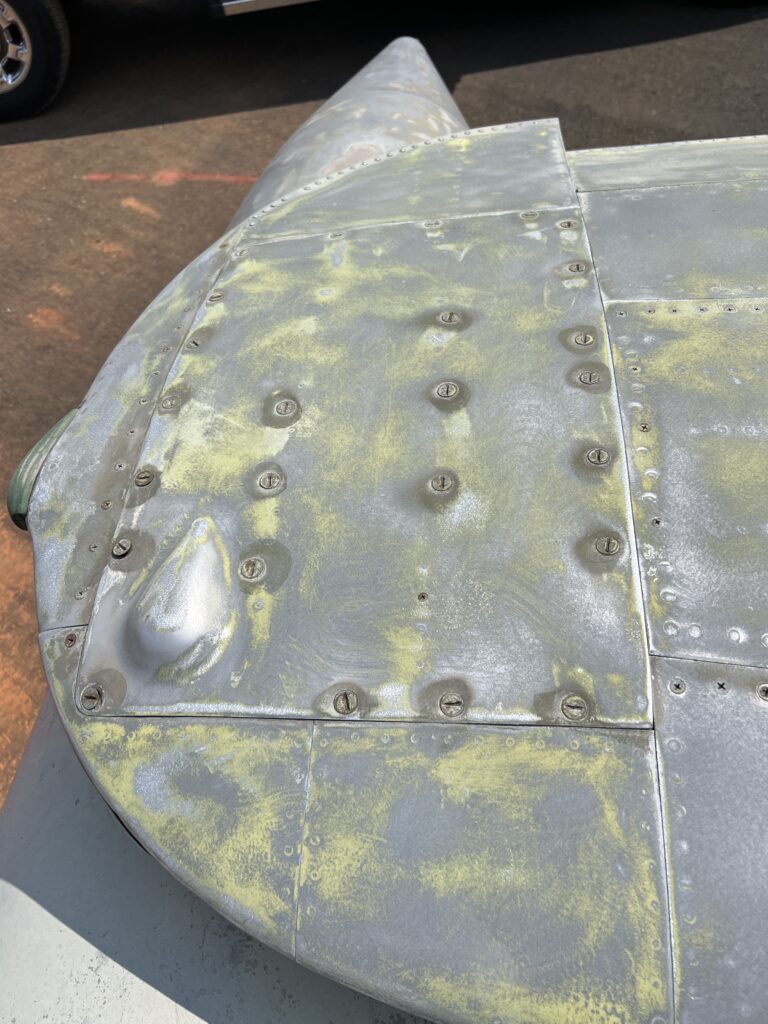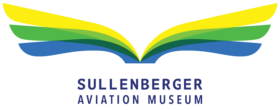What does it take to restore an aircraft?
When an aircraft is added to the museum collection, a plan for sustained care is developed by Sullenberger Aviation Museum’s Collections Team. This involves lots of research and, in some cases, a decision is made to restore its original markings and paint scheme.
“Each aircraft has a different provenance and story to tell, and this requires a personalized preservation, conservation, or restoration plan based on the specific aircraft and its current condition,” said Katie Swaringen, Vice President of Collections at Sullenberger Aviation Museum. “We are a Smithsonian Affiliate, and we strive to utilize best practices in the field to guide decision making for our artifacts. That often involves reaching out to the Smithsonian and other partners for advice.”
When it was time to update the care plan for the Lockheed TV-1 Shooting Star on loan to the museum from the National Museum of the Marine Corps, Collections Specialist Molly Kinyon went to great lengths to work with Marine and Naval experts to better understand this aircraft’s history. Her research uncovered a history, service, and paint scheme previously unknown to the Team.
“Whatever course is chosen, the primary goal is to maintain authenticity, what I define as tenacious, unwavering concentration on the original history, not just of the aircraft type, but whenever possible, the specific airframe that is undergoing treatment,” wrote National Air and Space Museum Curator Russ Lee in a 2010 editorial.[1]

This photo is of the TV-1 (serial number 33866) taken May 12, 1956, when it was stationed at NAS Oakland, California.
After multiple emails back and forth with the National Museum of Naval Aviation in Pensacola, FL, the Collections Team made the decision to restore the TV-1 to a paint scheme from when it was stationed at Naval Air Station (NAS) Oakland. For the chosen paint scheme, the aircraft itself is bare aluminum. Other than the US insignia, the ATU (Aviation Training Unit) markings are all in black. The thin warning stripe around the fuselage is red. The NRAB Oakland scheme includes an international orange band around the fuselage above and below the NAVY and OAKLAND markings, with the tail code “F” and nose marking “108” in black.
The museum has engaged Warbirds Restoration, LLC, to assist with the restoration of the aircraft under the direction of the Collections Team. Work started on this aircraft during the first week of August 2023. The team started by sanding the aircraft to remove the first layer of paint. The next step will be to strip the aircraft down to bare aluminum. Then the aluminum gets polished to a dull shine and the NAS Oakland decals will be applied.



After restoration, the TV-1 will hang in the Innovation Nation Exhibition in the Main Gallery at Sullenberger Aviation Museum.

The caring for and preserving artifacts is a critical responsibility of the professional Collections Team at SAM, and its importance is reflected in SAM’s annual budget. Support the Team at SAM as they prepare each aircraft for the museum’s debut in 2024 with a meaningful gift today. Your investment keeps us in the air!
References:
[1] https://airandspace.si.edu/stories/editorial/restoring-and-preserving-aircraft-0
Accessed August 20, 2023.

